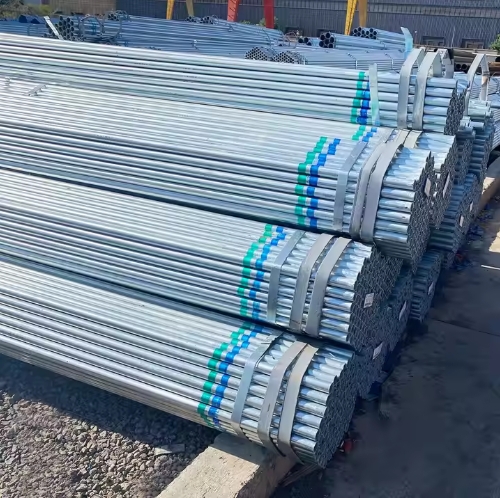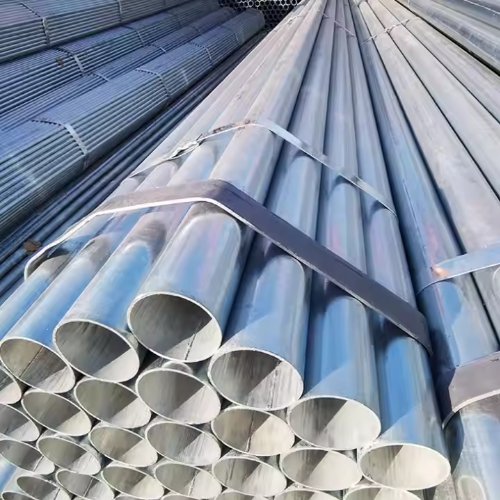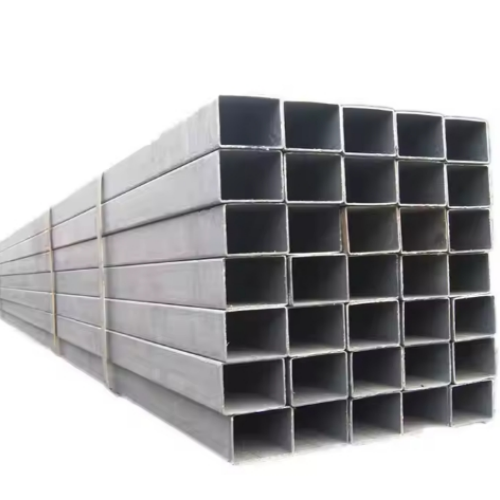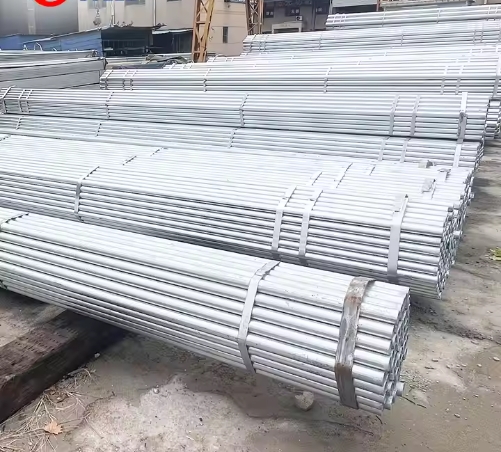National Standard Hot-Dip Galvanized Steel Pipes (DN15-DN200), Zinc Coating ≥80μm, Special for Fire Protection/Greenhouses
Category:
Summary description:
Keywords:
Details
National Standard Hot-Dip Galvanized Steel Pipes (DN15-DN200), featuring a zinc coating of at least 80μm, stand as a paragon of reliability and performance in the realm of industrial and agricultural applications, with a particular focus on fire protection systems and greenhouse structures. These pipes are meticulously crafted to adhere to stringent national standards, ensuring consistent quality, durability, and safety across every unit produced.
Starting with the core specification, the range from DN15 to DN200 covers a versatile spectrum of diameters, making them suitable for a wide array of tasks. DN15, the smallest in the series, is ideal for smaller-scale fire protection lines or auxiliary systems within greenhouses, where precise water distribution or structural support in confined spaces is required. On the other end, DN200 pipes are engineered to handle high-volume water flow, making them indispensable for main fire sprinkler lines in large commercial buildings, industrial facilities, or as primary structural components in expansive greenhouse setups. This broad size range ensures that whether the project is a compact greenhouse or a sprawling industrial complex, there is a pipe in this series to meet the specific demands of the application.
A defining feature of these pipes is their hot-dip galvanization process, which results in a zinc coating of no less than 80μm. This thickness is not arbitrary; it is a critical factor that directly contributes to the pipes' exceptional corrosion resistance. Hot-dip galvanization involves immersing the steel pipes in a bath of molten zinc, creating a metallurgical bond between the zinc and the steel. This bond forms a protective barrier that shields the underlying steel from moisture, chemicals, and environmental elements that would otherwise cause rust and degradation. The 80μm coating thickness ensures that this protection is long-lasting, even in harsh conditions such as the high humidity of greenhouses or the exposure to various elements in outdoor fire protection systems. In fact, this level of coating can significantly extend the service life of the pipes, often by decades, compared to non-galvanized alternatives, reducing the need for frequent replacements and lowering long-term maintenance costs.
When it comes to fire protection, these national standard hot-dip galvanized steel pipes are a top choice for several reasons. Fire safety is of paramount importance in any building, and the reliability of the piping system that delivers water to sprinklers, hydrants, or other fire suppression equipment is non-negotiable. The galvanized coating ensures that the pipes remain free from corrosion, which could otherwise lead to blockages or leaks. A blocked pipe in a fire emergency could mean the difference between containing a fire and a catastrophic spread, while a leak could reduce water pressure, rendering the fire suppression system ineffective. Additionally, the steel itself provides high strength and rigidity, allowing the pipes to withstand the pressure of water flow during a fire, as well as the physical stresses that may occur in the event of a building fire, such as heat-induced expansion or structural shifts. Compliance with national standards further guarantees that these pipes meet the strict performance criteria set for fire protection systems, including pressure ratings, burst strength, and resistance to high temperatures, giving building owners, engineers, and fire safety professionals peace of mind.
In the context of greenhouses, these pipes offer a host of advantages that make them perfectly suited for agricultural applications. Greenhouses operate in an environment characterized by high humidity, frequent watering, and exposure to fertilizers and pesticides, all of which can be corrosive to unprotected metal. The 80μm zinc coating acts as a robust defense against these corrosive agents, preventing rust and ensuring the structural integrity of the greenhouse framework. Greenhouses rely on a stable structure to support glazing materials, ventilation systems, irrigation lines, and sometimes even heavy equipment or crops. The strength of the steel pipes, combined with their corrosion resistance, ensures that the framework remains sturdy and stable over time, even under the weight of snow, wind, or heavy plant growth. Moreover, the versatility in sizes allows for customization of the greenhouse structure, from small hoop houses to large commercial greenhouses with complex designs. The pipes can be easily cut, welded, or connected using standard fittings, making installation straightforward and adaptable to the specific layout and requirements of the greenhouse project. Additionally, the smooth internal surface of the galvanized pipes, when used for irrigation within the greenhouse, minimizes friction loss, ensuring efficient water distribution to plants, which is essential for optimal crop growth.
Beyond their functional benefits, these pipes also offer economic advantages. While the initial cost of hot-dip galvanized steel pipes may be higher than that of non-galvanized steel or other materials, the long-term savings are substantial. The extended service life, reduced maintenance needs, and lower replacement frequency mean that the total cost of ownership is significantly lower over time. In fire protection systems, the reliability of these pipes reduces the risk of costly fire damage due to system failure, which can run into millions of dollars. In greenhouses, a durable structure minimizes downtime for repairs, ensuring continuous crop production and protecting the investment in agricultural operations.
Furthermore, the national standard certification is a mark of quality that should not be overlooked. It signifies that the pipes have undergone rigorous testing and inspection throughout the manufacturing process, from the selection of raw materials to the final galvanization step. This includes checks for steel composition, pipe dimensions, coating thickness, adhesion of the zinc layer, and overall structural integrity. Compliance with national standards also ensures interoperability with other components and fittings, which is crucial for seamless installation and system performance. Whether used in a fire protection network that must integrate with valves, sprinklers, and pumps, or in a greenhouse structure that connects with brackets, hinges, and cladding, these pipes are designed to work harmoniously with standard industry components.
In terms of sustainability, hot-dip galvanized steel pipes are an environmentally responsible choice. Steel is one of the most recycled materials in the world, and the galvanization process does not prevent the pipes from being recycled at the end of their service life. The long lifespan of the pipes also reduces the demand for new materials, conserving natural resources and reducing the environmental impact associated with manufacturing and transportation of replacement products. In agricultural settings, the durability of the greenhouse structure supports sustainable farming practices by enabling year-round crop production, reducing the need for expansion into new land, and optimizing resource use such as water and energy.
In conclusion, National Standard Hot-Dip Galvanized Steel Pipes (DN15-DN200) with a zinc coating of ≥80μm are a superior choice for both fire protection and greenhouse applications. Their combination of corrosion resistance, strength, versatility, and compliance with strict standards ensures reliable performance, long service life, and cost-effectiveness. Whether safeguarding lives and property in the event of a fire or supporting sustainable agricultural production in greenhouses, these pipes deliver exceptional value and peace of mind, making them an indispensable component in a wide range of critical and essential projects.
More Products
Message

All Rights Reserved Copyright © RIZHAO STEEL HOLDING GROUP CO.,LTD. SEO 【Business license】
All Rights Reserved Copyright © RIZHAO STEEL HOLDING GROUP CO.,LTD.




















